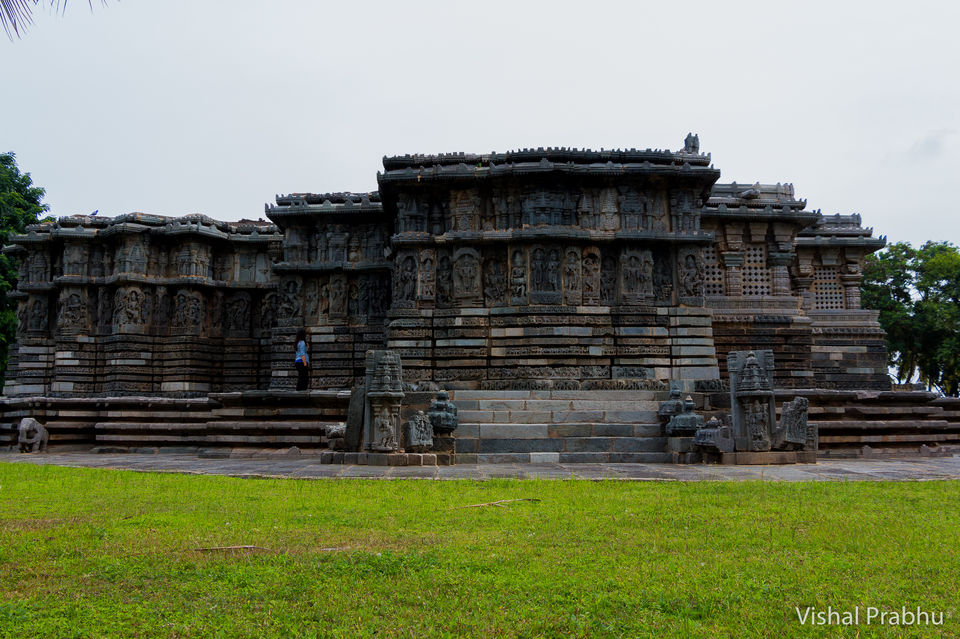
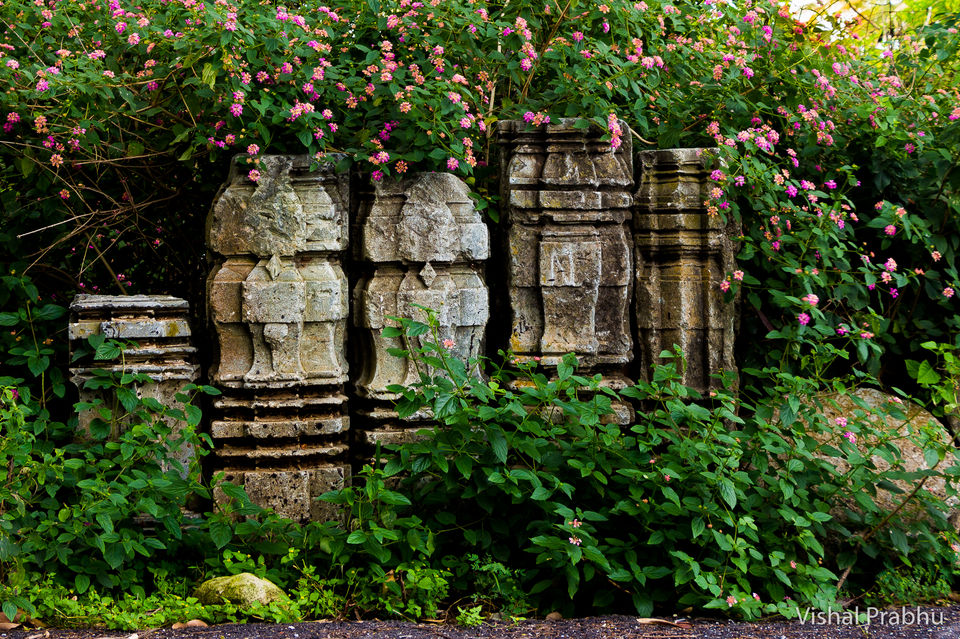
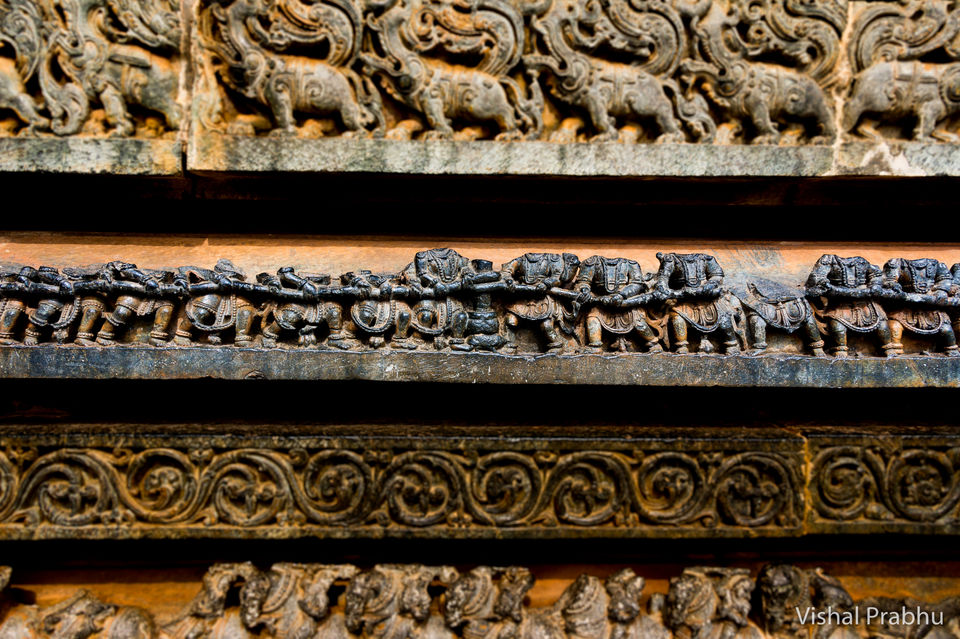
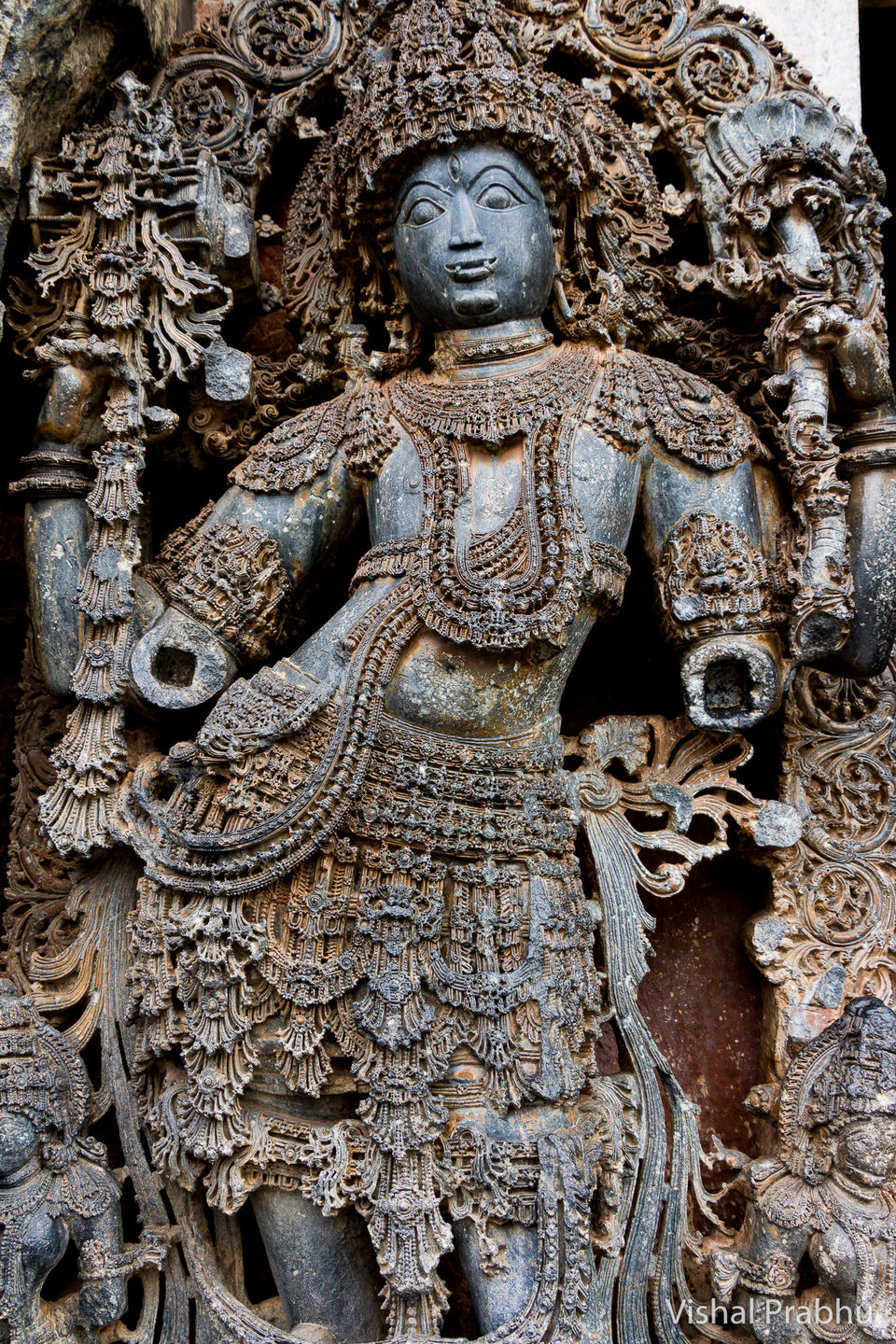
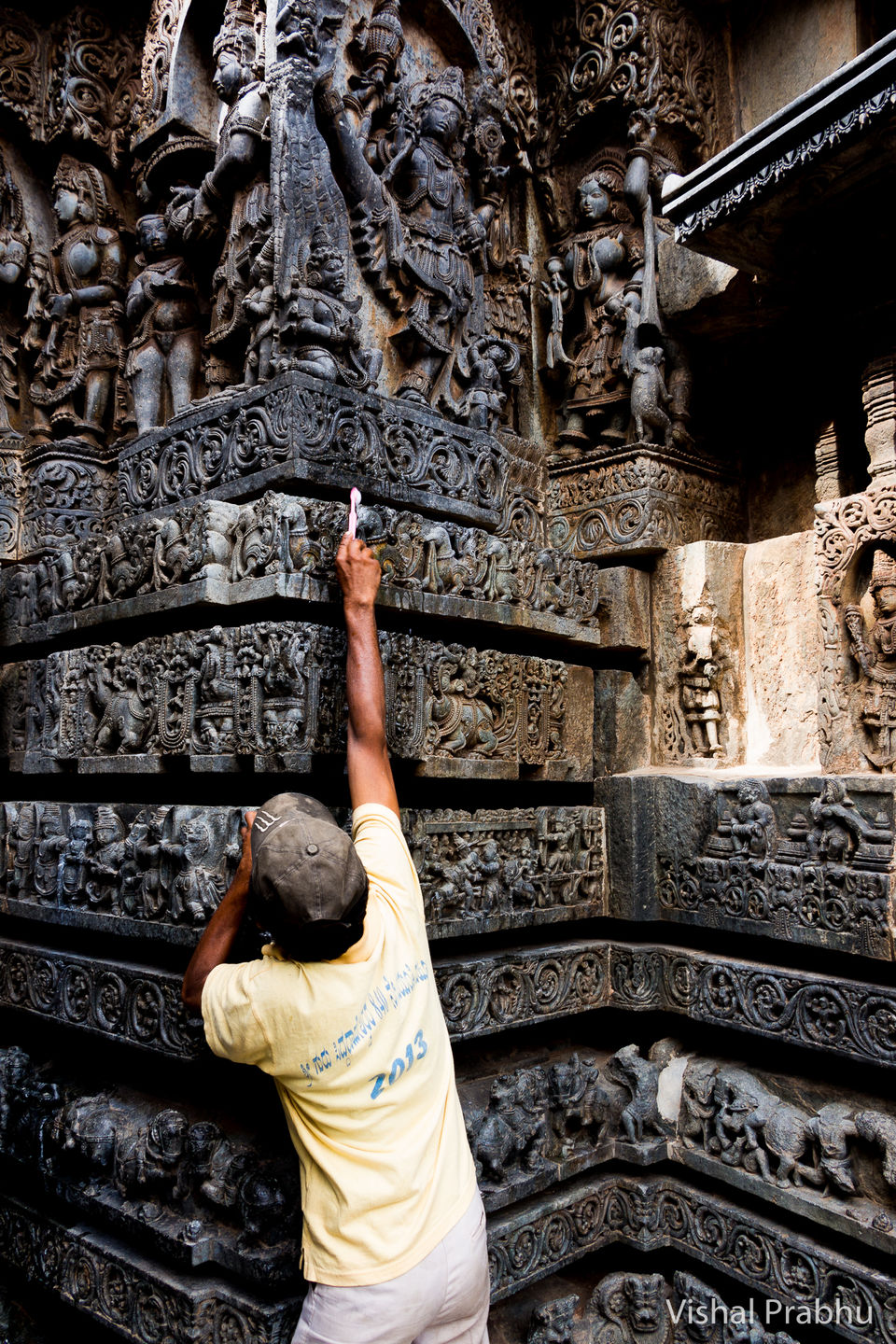
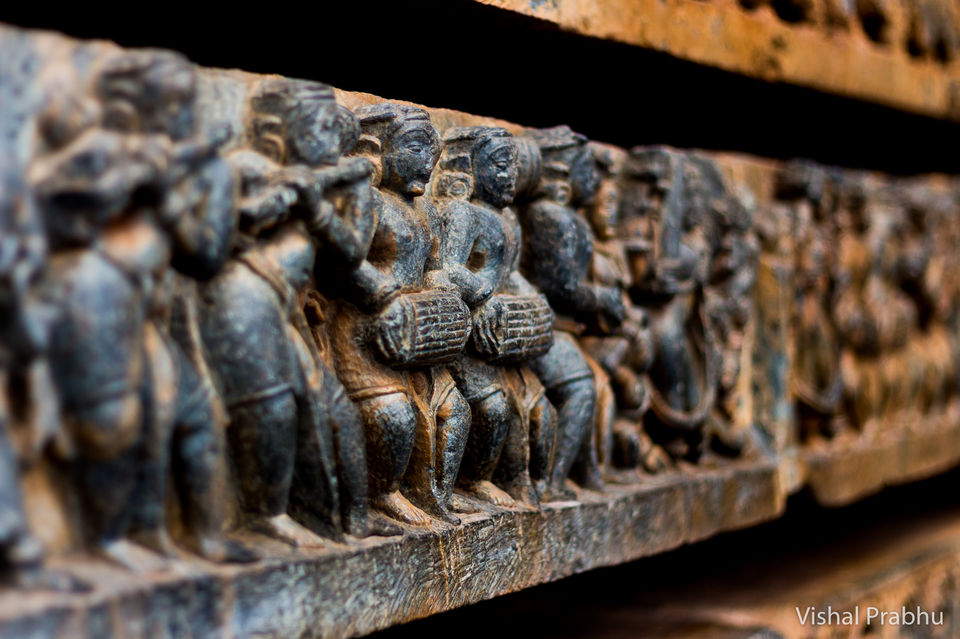



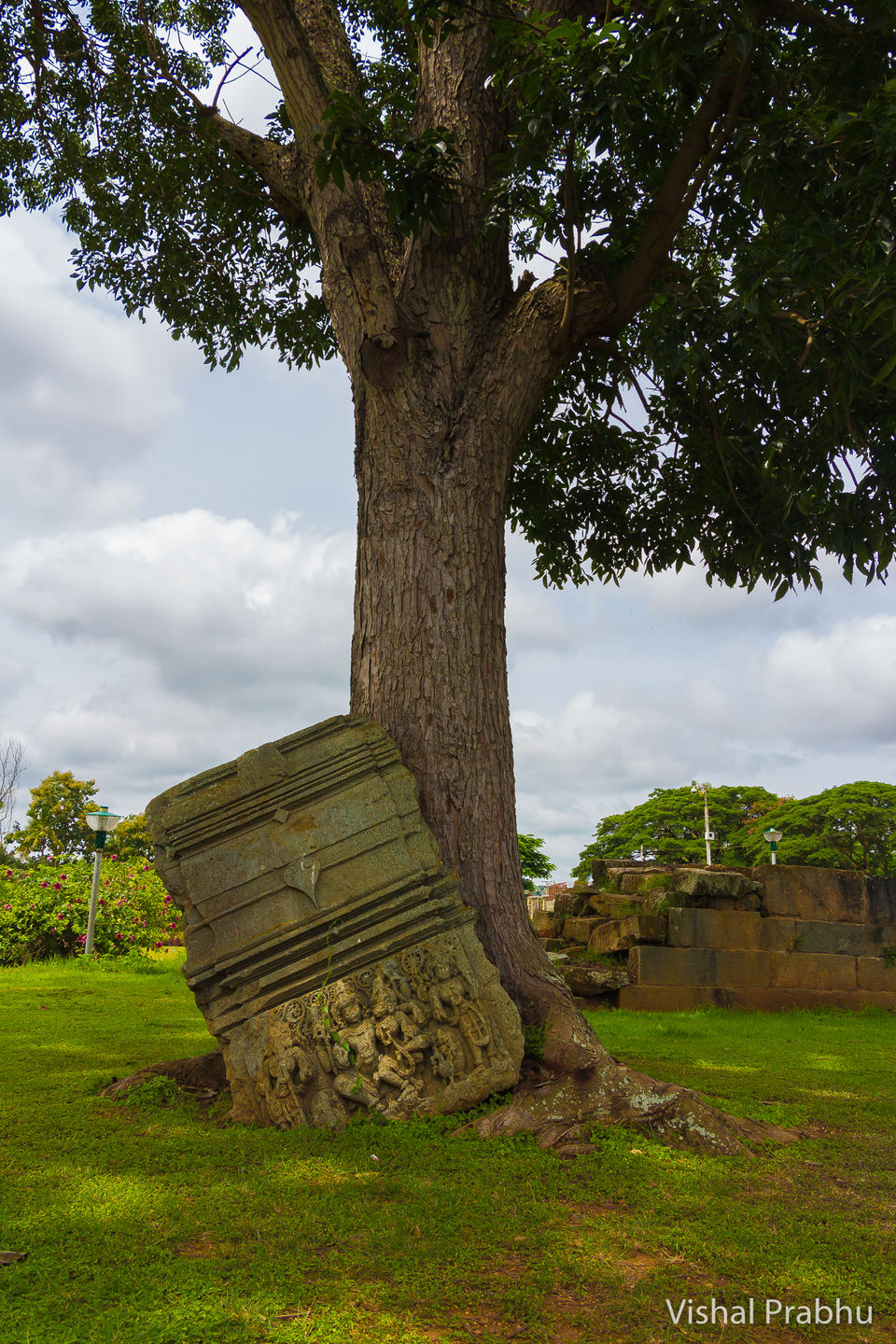
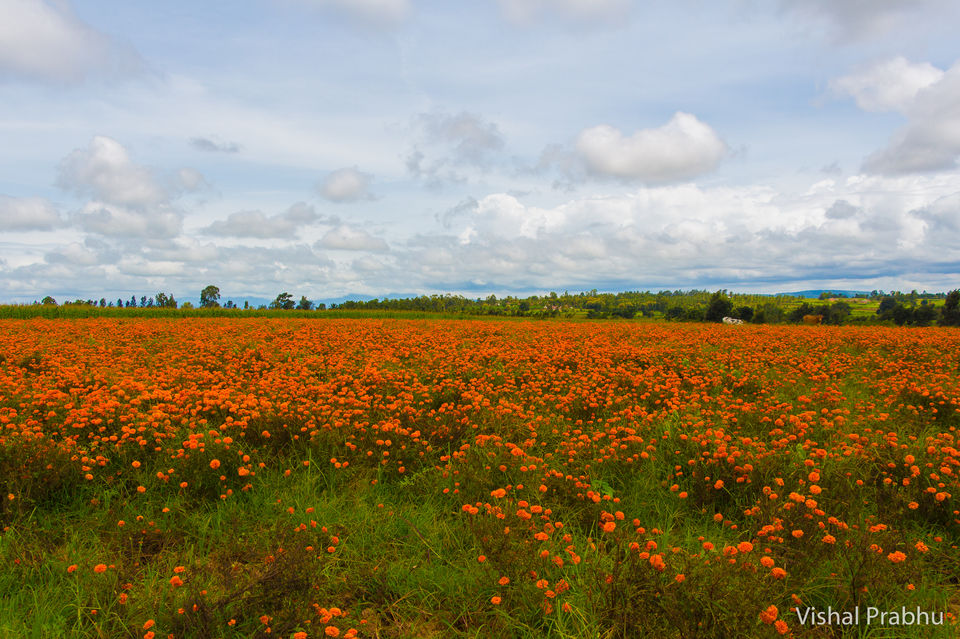
The Hoysala dynasty, originally ruling the elevated Malnad region in Western Ghats, came to prominence after the decline of the Western Chalukyas around 12th century AD. The Hoysala king Vishnuvardhana was a skilled and ambitious military leader who took advantage of the many conflicting dynasties of the time, to increase the expanse of the Hoysala empire. In keeping with the Hindu ruling ethics of the time, the Hoysalas established a culturally diverse society, encouraged the pursuit of philosophy and honored it's various artists. As a result, the time saw great advances in art, architecture and literature.
It was a smart thing to do too, since today, they are mostly remembered for the magnificent temples and the extensive Sanskrit & Kannada literature produced during their rule. Over one hundred magnificent temples scattered all over Karnataka, lay testimony to the greatness of Hoysala architecture. The most famous of these temples are the Chennakesava Temple at Belur (the original capital), and the Hoysaleswara Temple at Halebidu, which became the new capital.
Halebidu, which literally means "old city", is a small village 31 kms from the Hassan district, and 215 kms from Bangalore. The road connecting Bangalore to Halebidu makes for an excellent drive, and is lined for the most part with green fields and abundant coconut orchards. There are plenty of small eateries on the way, including two Coffee Day outlets. Although, any time of the year is a good time to visit these temples, I would recommend travelling post monsoon when the trees adorn a freshly painted green. You can also be outdoors all day admiring the temple without having to worry about the sun! There are a lot of places to stay at a driving distance from Halebidu & Belur. We stayed in Hassan, and drove up to the temple.
Our first stop was Kedareshwara temple just before Halebidu. We ended up there due to a location error on our maps which led us to take a wrong turn. But it was a happy mistake to make. The temple is beautiful and not privy to tourists. We found ourselves in front of this insanely beautiful temple raised on a pedestal with lovely manicured gardens complimenting it's grey stone, and there was nobody else in sight. It was as if the temple was waiting to be found and we were the lucky explorers to chance upon it!
We then headed to the main temple at Halebidu, which is right next to the local bus stand. After a refreshing cup of tea at a local thela, we moved on to see the temple. The temple construction was commissioned by King Vishnuvardhana's minister Ketamala in order to please the King. However, after being 86 years under construction, the temple is still incomplete. It has been ransacked twice since by the Mughal commander Mallik Kafur. The building still stands in full glory. The complex houses two temples residing next to each other, looking onto two monolithic Nandi statues. These are the shrines of Hoysaleswara and Shantaleswara, named after King Vishnuvardhana Hoysala and his Queen Shantala Devi.
The outer perimeter of the temple is designed to be star shaped in order to maximize the surface area available to the sculptors. These walls, adorned with exquisite carvings, make a perfect canvas to showcase the craftsmanship of the artisans. They say that no two sculptures are the same in this temple. It is a pleasure to see the great attention to detail in the design of intricate patterns, the statues here can truly tell a story. They depict the traditions, mythology and folklore of the times gone by; including scenes from the Mahabharata, Ramayana, prevalent philosophies and local celebrations. The temple doors have sculptures of heavily jewelled guards dressed in ornate attires. Men sure seemed to have an elaborate sense of fashion back then.
The inside of the temple was quite interesting. It was fascinating to learn that part of the temple was used for purposes other than worship as well. It worked as a court, a commerce hub and an entertainment area. Not bad for a quick visit to the temple.
A lot of the statues inside the temple have been plundered by the Mughals and the British, they say some statues can be found in museums in Britain. It is pretty sad to see a civilized nation exploit the treasures of a beautiful place. Makes one wonder how subtlety of mannerisms can be so fickle at times.
Walking across the temple, we ended up taking a walk in the freshly watered gardens. The site is surprisingly well-maintained. We even saw one person cleaning all the statues meticulously with a tiny brush. I was surprised at us being surprised. Somehow we had subconsciously come to expect & accept certain levels of neglect and filth at most tourist destinations around, but this place was a pleasant surprise. Kudos to the management for doing a good job. The tiny details added a lot to the pleasantness of the experience.
We then headed to Belur which is a mere 30 kms from Halebidu. It would be good to give a straight out heads up here, the roads are pretty awful on this stretch. And the small 30kms stretch seemed to go on for over an hour. The good thing though was that we came across a beautiful marigold field on this route, we walked out and the local farmers are pretty friendly. The whole place was wonderfully green, given that it had just finished raining, and it was a beautiful day.
It was around 2 PM on a Sunday, so the temple at Belur was substantially more crowded with both locals and tourists alike. You can park your car right outside the temple gates, and walk in without a ticket. This is a bigger temple complex, and has equally intricate carvings on the walls. We were told that the inner temple is beautiful here, but seeing the crowd we thought that we will come back another day.
The road back from Belur to Bangalore was spectacular as before.

